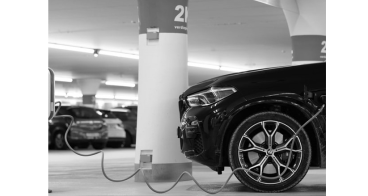Mobile charging robots complementing EV infrastructure ramp-up
The market ramp-up of electric mobility depends on the establishment of a comprehensive charging infrastructure. Large differences are to be expected locally, as power grid coverage can be problematic depending on the area. Providing electric vehicles with nationwide coverage exclusively with the help of stationary charging stations is not without risks: Charging stations could be too often already occupied, and the construction of new ones could be expensive and time-consuming. Mobile charging stations are therefore considered a sensible addition.
According to researchers from PEM of RWTH Aachen University, the charging infrastructure must be understood as an integrated subsystem of the urban infrastructure and must be developed as such, because isolated solutions in urban mobility and energy systems no longer meet the technological standard. Today’s solutions are networked. This is where automated and mobile charging robots could come into play. In the foreseeable future, these types of solutions could not only allow spatially flexible and grid-oriented charging of electric vehicles but will also supply e-bike sharing stations with energy and connect with its peers to recharge each other with electricity over short distances if necessary.
GINI: A four-wheeled mobile helper for electric charging
A solution is currently being developed in Aachen as part of the research project of the same name funded by the German Federal Ministry for Economic Affairs and Climate Action. The GINI project is run by several partners, including PEM of RWTH Aachen University, the mobility service providers UZE and Velocity Mobility as well as the engineering service provider PEM Motion. The four-wheeled mobile helper features fast-charging technology and an inductive charging interface. Furthermore, it can record, pre-process and analyze data. Inductive charging works thanks to a bidirectional system installed on the rear surface of the robot, whose counterpart is housed in a “table” under which GINI parks in reverse. This allows the robot to charge the station, which is equipped with stationary storage, and the station in turn can charge the robot. Primary and secondary sides of the inductive system are built into both the robot and the station. Once in use, the robot is designed to roll to the exact location where it is needed. Thanks to a “follow me” function, drivers can pick it up at a collection point and guide it to their vehicle.
Autonomous solutions’ legal framework requires demonstration
Technically, it is already possible to automatically drive to a digitally agreed meeting point, but the legal framework for autonomous driving is still lacking. To demonstrate the technical potential to be suitable for series production and ready for the market, the GINI test robots are currently under development and will soon be officially approved. By then, key findings from extensive tests under conditions close to the application will be incorporated to launch much more advanced versions on the market.
Learn more about the research activities at PEM of RWTH Aachen University and access the shared files section below.
Professor Achim Kampker studied mechanical engineering with a focus on production engineering at RWTH Aachen University and holds the RWTH Chair of “Production Engineering of E-Mobility Components” (PEM) he founded in 2014. Jonathan Gerz heads PEM’s “Micro Mobility” research group and is responsible for the GINI project.
Graphic: © PEM RWTH Aachen/INTIS
Published on 7 August 2023.






